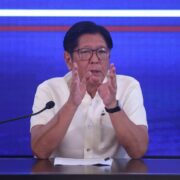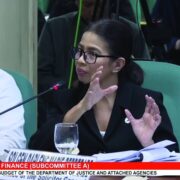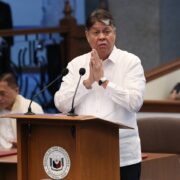Critical moment for PH’s critical minerals

In the intensifying global race for critical minerals—crucial components in electric vehicles (EVs), renewable energy technologies, advanced electronics, and other strategic industries—the Philippines stands at a pivotal juncture in this global energy transition. With abundant reserves of nickel, cobalt, copper, and rare earth elements, the country holds in its soil the keys to the 21st-century economy. Yet, without a strategic critical minerals policy, it risks squandering this opportunity, remaining a mere supplier of raw materials rather than ascending the value chain.
A mineral is considered “critical” if it is vital to a country’s strategically important economic sectors. Many governments have clear lists and strategies to safeguard these resources. Unfortunately, the Philippines has yet to define which minerals are considered critical, let alone have a policy that would protect its own resources and ensure a stable and sustainable supply of those minerals.
Nations worldwide are aggressively securing their critical mineral supply chains. A 2025 White & Case survey shows that geopolitics and economic interests—more than climate concerns—is the driving force shaping mining and metals. For instance, China’s state-backed financial institutions have poured over $57 billion in the past two decades into resource-rich countries to tighten Beijing’s grip on critical minerals. It now controls roughly 61 percent of rare earth production and more than 90 percent of processing capacity, according to the International Energy Agency—power that Beijing has wielded to squeeze its rivals, imposing export controls on a range of critical rare earth minerals, rattling its rival the United States.
Washington has scrambled to respond, imposing tariffs on Chinese EVs and batteries, solar panels, semiconductors, and other products. It has also diversified its supply chains by forging deals far and wide—from securing a mineral deal in war-battered Ukraine to even exploring the purchase of Greenland, to brokering a peace deal between Rwanda and the DRC that could unlock lucrative mineral access to some of the world’s richest deposits of rare earths.
Other nations are acting decisively. The European Union’s Critical Raw Materials Act aims to shore up supply chains. In 2024, the EU signed a major agreement with Australia—home to some of the planet’s recoverable critical mineral deposits—to build sustainable and ethical critical mineral supply chains.
Meanwhile, Canada has committed $3.8 billion to its critical minerals strategy, emphasizing sustainability and indigenous partnerships. The United Kingdom’s own strategy intends to position itself at the forefront of the green industrial revolution, while Brazil’s National Strategic Pro-Minerals Policy has helped it become one of the top lithium exporters. Closer to home, Malaysia even rolled out its National Advanced Materials Technology Roadmap 2021-2030 emphasizing the need to expand the downstream rare earth industry with the goal of creating a new source of wealth.
The Philippines, with its vast mineral wealth, is well-positioned to become a key player in this global landscape. Recent talks about joining the US-Japan critical minerals agreement shows a clear willingness to engage more strategically. A free trade agreement with Canada focusing on critical minerals is in the works, and just this May, the Philippines signed a strategic pact with South Korea on critical minerals and EV development.
However, to truly capitalize on its resources, the Philippines must develop a comprehensive critical minerals policy that addresses supply reliability and resiliency, sustainable and responsible practices, favorable investment climate, and stable regulatory environment.
Indonesia offers a lesson the Philippines cannot afford to ignore. Jakarta’s massive nickel production caused global nickel prices to plummet. For the Philippines, that should be a cautionary tale—highlighting the need to employ price stability mechanisms when striking future trade and investment deals.
To entice mineral processing investors, the government must also build physical and regulatory infrastructure needed to move projects forward. If the country could implement the energy virtual one-stop shop for energy projects, it can certainly develop a similar mechanism to clear bottlenecks for mining.
Such a policy should also prioritize sustainable mining practices, crafting its own framework that adheres to, or even surpasses, international standards on sustainable development in mining—protecting communities and safeguarding ecosystems.
At this pivotal moment, the Philippines cannot afford not having a clear roadmap. For the Philippines to claim its rightful place in the global critical minerals supply chain, the time to act—decisively and strategically—is now.
—————-
Reeno E. Febrero is senior legal officer at Global Ferronickel Holdings, Inc. He is currently pursuing his Master of Laws at the University of the Philippines, with a thesis focused on sustainable mining.

















India’s ‘show of strength’ risks global strategic fallout